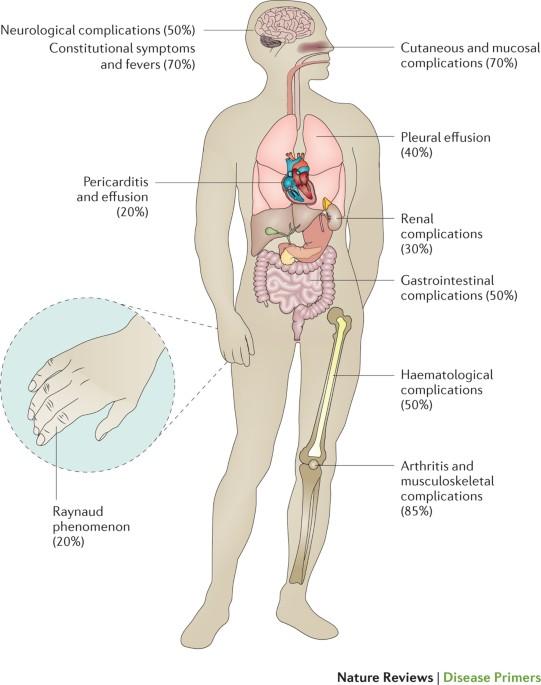Systemic Lupus Erythematosus

Overview
Systemic Lupus Erythematosus (SLE), commonly known as lupus, is an autoimmune disorder where the body’s immune system mistakenly fights its own tissues. The disease varies in severity, with mild cases involving skin rashes and fatigue, while more serious cases can affect the kidneys, heart, and lungs. The Lupus Foundation of America estimates that 1.5 million Americans and at least five million people worldwide suffer from this condition.
Types
The different types of lupus include:
– Systemic Lupus Erythematosus (SLE): The most common form, it can affect any organ system in the body.
– Discoid (Cutaneous) Lupus: This type primarily affects the skin, causing large rashes on the face, neck, scalp, and body.
– Drug-induced Lupus: Some pharmaceuticals might induce lupus in sensitive individuals.
– Neonatal Lupus: This is a rare condition affecting babies of mothers with lupus.
Causes
The exact cause of lupus isn’t known. However, it is believed to develop in response to a combination of factors such as hormones, genetics, and the environment. Certain factors increase the risk of lupus, like:
– Being a woman of childbearing age
– Being of African, Asian, or Native American ethnicity
– Having a family history of lupus
– Exposure to certain types of medications or environmental factors
Symptoms
Lupus symptoms vary and can come and go. Common symptoms include:
– Fatigue and fever
- Joint pain, stiffness, and swelling
– Skin rashes, particularly the butterfly-shaped rash across the cheeks and nose
- Dry eyes
– Chest pain
– Difficulty breathing
- Headaches, confusion, and memory loss
Diagnosis
Lupus can be difficult to diagnose because its signs and symptoms often resemble other ailments. Doctors typically use a combination of the following tools for diagnosis:
– Detailed medical history: This involves the doctor asking about symptoms and other health problems.
– Physical examination: The doctor might examine the points of reported pain or swelling, as well as other parts of the body that might be affected.
– Blood tests: Tests might range from checking for certain markers, such as antibodies, to complete blood count.
- Urine test: This is done to check for increased protein or red blood cells in the urine, which can occur if lupus has affected the kidneys.
– Biopsy of the kidney or skin: In certain cases, a small sample of kidney tissue or skin might be removed and examined under a microscope to determine if lupus is the cause of symptoms.
Treatment Options
While there’s no cure for lupus, treatments can help control symptoms. They might involve:
– Nonsteroidal anti-inflammatory medications for joint pain and stiffness
– Antimalarial drugs to manage symptoms
– Corticosteroids to counter inflammation
– Immunosuppressants to suppress the immune system
In severe cases, treatments may also include stronger medications and therapeutic procedures.
Living With Systemic Lupus Erythematosus
Living with lupus involves managing symptoms and continuing regular medical care:
– Regular Exercise: This can help prevent fatigue and promote overall wellbeing.
– Healthy Diet: A well-balanced diet can improve energy levels and support a healthy lifestyle.
– Rest: Because fatigue is common, sufficient rest and sleep are crucial.
– Stress Management: Stress can worsen symptoms, so mindful techniques such as meditation, yoga, or breathing exercises can be beneficial.
– Monitoring Symptoms: Noting down daily symptoms can help influence treatment decisions and monitor disease progress.
When to Seek Help
Seek immediate medical attention if you experience:
– Sharp abdominal pain
– A high fever
- Chest pain or shortness of breath
– Sudden increase in leg swelling
– Sudden vision changes
Remember, lupus affects everyone differently. It’s important to discuss your individual symptoms and the best treatment approach with your healthcare provider. With proper treatment and management, people with lupus can lead an active, healthy life.
